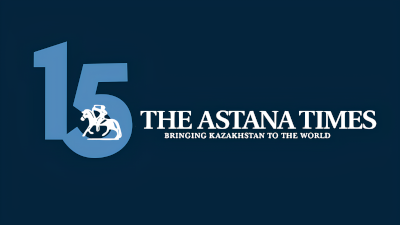ASTANA – In addition to its wealth of historical monuments that transport visitors to past eras, Kazakhstan is home to a site that tells a different kind of story—one rooted in the technological leaps of the 20th century. This is Baikonur, the world’s first and largest cosmodrome, from which humanity took its first steps into space. This year, the cosmodrome marks the 70th anniversary of its establishment.
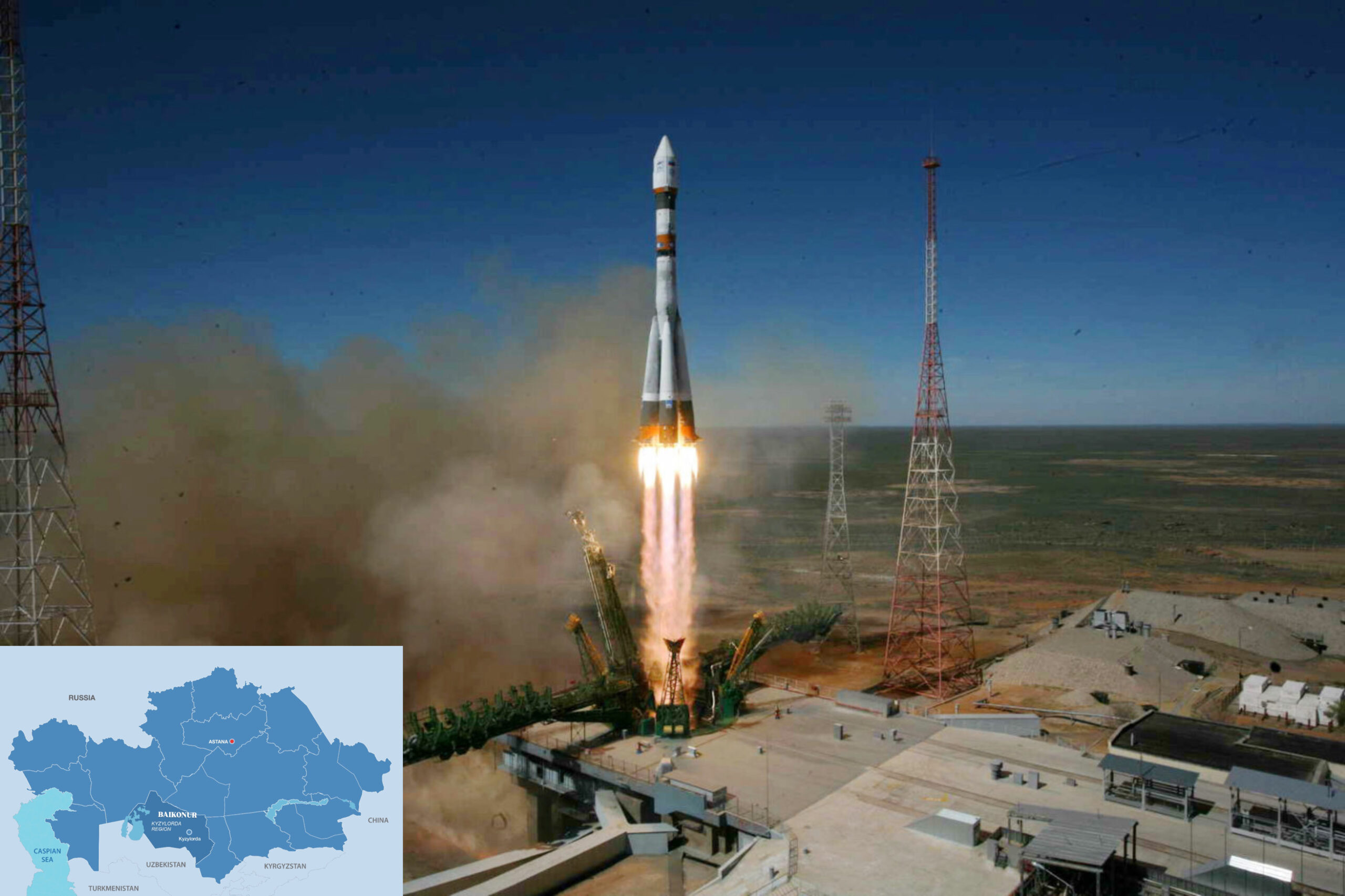
The Baikonur Cosmodrome is the largest operating cosmodrome located in the city of Baikonur. Photo credit: Roscosmos. Click to see the map in full size. The map is designed by The Astana Times.
A secret in the steppe
Baikonur’s origins trace back to Feb. 12, 1955, when the Soviet government issued a decree establishing Scientific Research Test Site No. 5 in the vast Kazakh steppe. Construction began in secrecy, with military trains arriving at Tyuratam station under the cover of misleading rumors—some even believed a grand stadium was being built. To maintain this illusion, a wooden sports facility was erected, concealing the actual launch complex. The entire facility was divided into numbered sites, a system that remains in use today—Baikonur itself being designated as Site No.10.
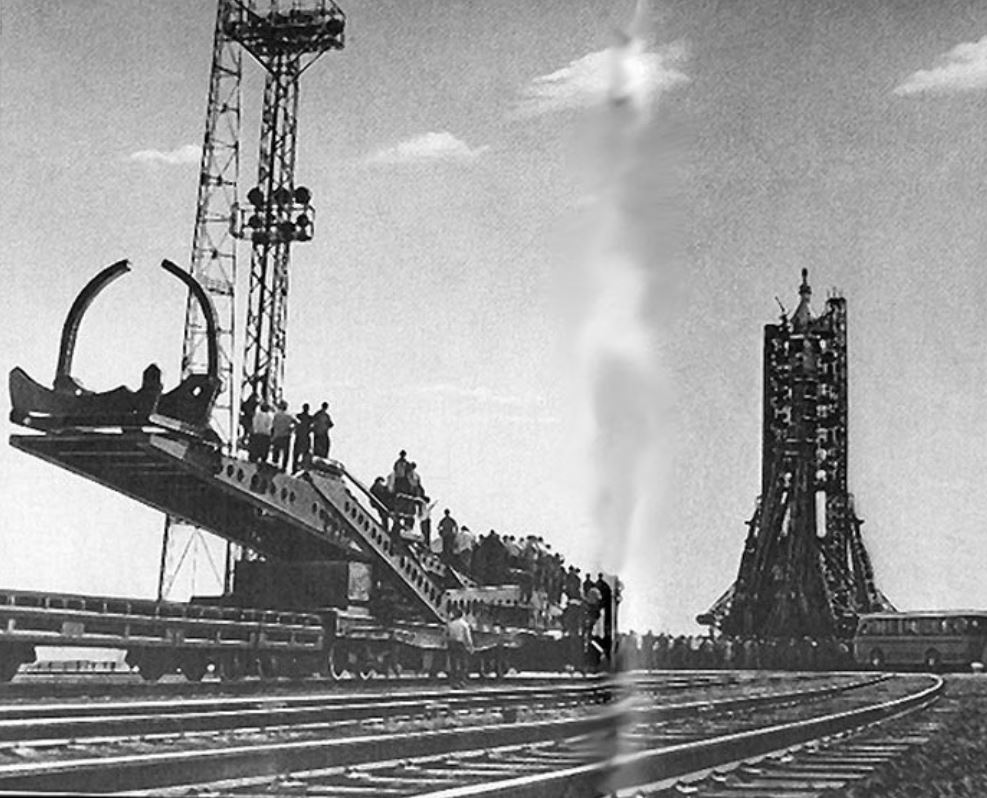
Construction of the Baikonur cosmodrome. Photo credit: russian.space
The site’s location was carefully chosen to meet the demands of the Soviet space program. At the height of the Cold War arms race, the Soviet Union developed the R-7 intercontinental ballistic missile, which later served as the foundation for space launch vehicles. The Kazakh steppe proved ideal, its sparse population, existing railway infrastructure, and proximity to the Syrdarya River ensured logistical feasibility. Chief Soviet rocket scientist Sergey Korolev advocated for the site due to its proximity to the equator, which allowed rockets to harness the Earth’s rotational speed for more efficient launches.
However, despite these strategic advantages, building Baikonur was a formidable challenge. The ground was so hard it had to be blasted apart, and fierce winds complicated the effort. Soviet authorities maintained strict security and to further mislead foreign intelligence the cosmodrome was code-named “Taiga”.
The milestones that changed history
The dawn of the space age arrived in 1957. By then, construction of the launch site was complete.
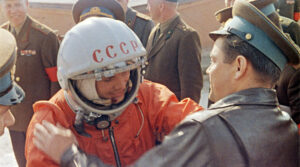
Yuri Gagarin before the launch, April 12, 1961. Photo credit: TASS
The cosmodrome’s first test launch on May 15 failed, as did a second attempt on July 12. But on Aug. 21, the R-7 intercontinental ballistic missile was successfully launched, proving the site’s capability. Then, on Oct. 4, the world changed forever—Baikonur sent Sputnik 1, the first artificial satellite, into orbit. A month later, on Nov. 3, the Soviet Union launched the second satellite, this time carrying Laika, a husky dog and the first living being in space.
On April 12, 1961, cosmonaut Yuri Gagarin made history with the first human spaceflight aboard Vostok 1, circling Earth in 108 minutes. Following this historic flight, the cosmodrome was officially named Baikonur, while the nearby settlement became the city of Leninsk. The name was deliberately misleading—originally chosen to confuse foreign intelligence agencies, it eventually became the recognized name of the launch site.
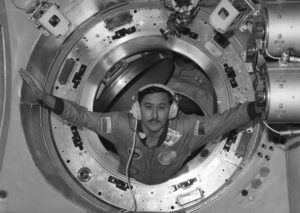
Talgat Mussabayev during his space mission. Photo credit: gctc.ru
Today, Baikonur remains a cornerstone of global space exploration. Manned and cargo spacecraft, along with satellites, regularly launch from the site, many heading to the International Space Station (ISS). In 2004, Kazakhstan and Russia signed an agreement extending the lease of Baikonur until 2050. Currently, the site conducts more than 20 launches annually. Over the decades, nearly 5,000 rockets have been launched from Baikonur, including 3,000 space missions. Over 150 cosmonauts, including Kazakhstan’s Toktar Aubakirov, Talgat Mussabayev, and Aidyn Aimbetov, have flown from its launchpads.
Spanning an immense 6,717 square kilometers, Baikonur features 12 launch pads (six operational), 11 assembly and test buildings, four fuel stations, a measuring complex with a computing center, and an oxygen and nitrogen plant. Its infrastructure includes two first-class airfields, over 400 kilometers of railway tracks, 1,000 kilometers of highways, more than 600 transformer substations, 6,000 kilometers of power lines, and 2,500 kilometers of communication networks. The cosmodrome employs more than 10,000 personnel.
Baikonur as a tourist destination
Once a top-secret military base, Baikonur now attracts visitors worldwide. However, visitors must secure passes in advance, ideally two months prior. Tour operators offer curated tours, culminating in a breathtaking rocket launch. Tourists explore active and decommissioned launch pads, mock-ups of spacecraft, museum exhibits, and historic sites. They also witness pre-launch preparations, the installation of rockets into upright positions, and astronaut send-off ceremonies. The highlight of the experience is the launch itself, observed from a designated safe viewing point. Kyzylorda is the nearest major city, which has an airport with domestic flights within Kazakhstan. You can take a train or drive around 240 kilometers from Kyzylorda to Baikonur.
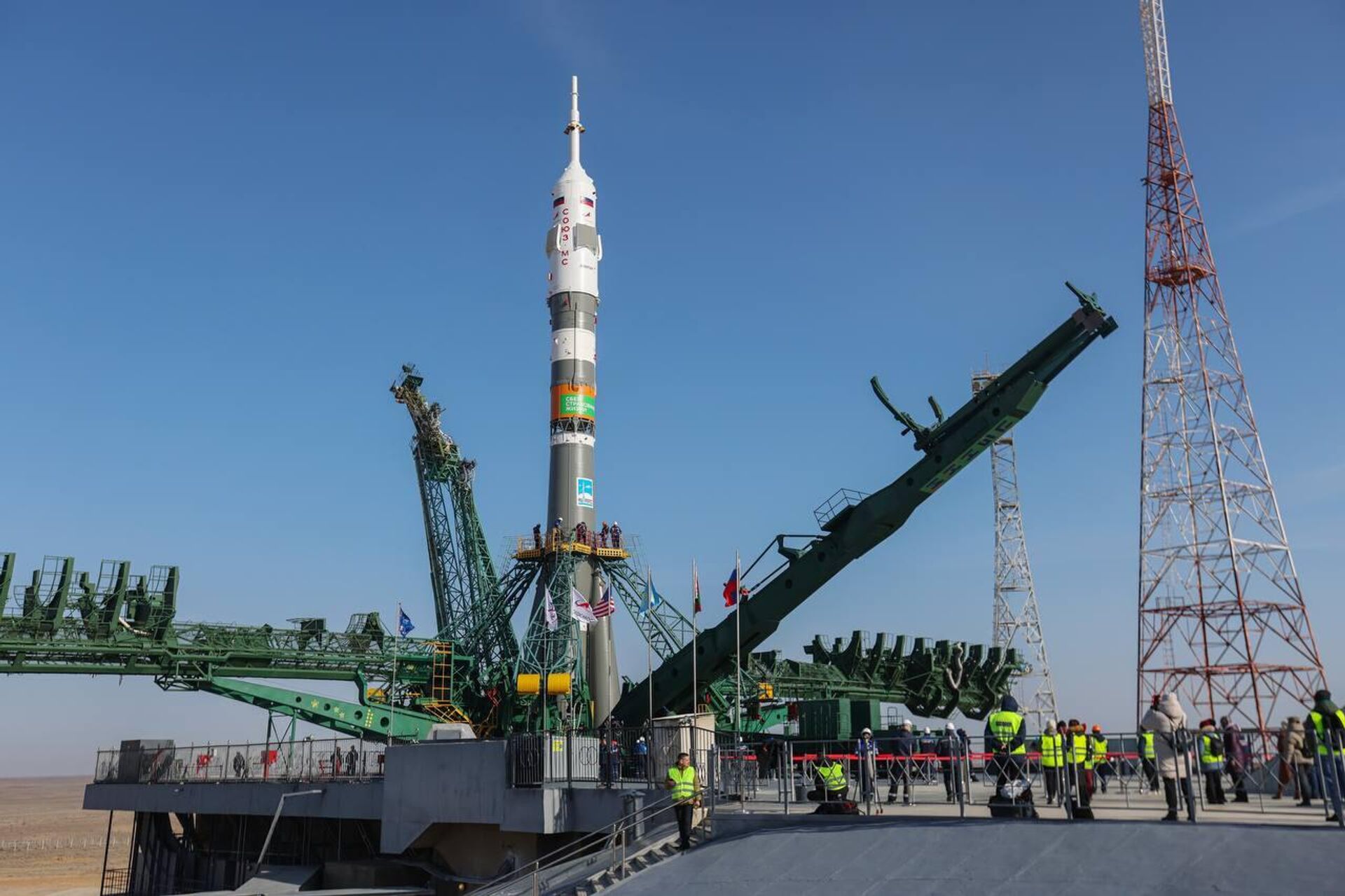
Photo credit: Roscosmos
Annually, the cosmodrome welcomes around 1,500 visitors, including astronauts’ families and space enthusiasts. However, the cosmodrome’s infrastructure limits further expansion of tourism.
A must-see attraction is the Museum of the History of the Baikonur Cosmodrome, located in the heart of the facility. It comprises a two-story exhibition hall, an open-air display, and two historic residences—one belonging to Korolev and the other to Gagarin.
The museum showcases space exploration history, featuring meteorite fragments, spacecraft windows, and equipment from past missions. There’s even a cabin where Soviet space dogs trained for flight. Visitors learn about cosmonauts’ specially tailored suits, each requiring over 60 measurements and weighing up to 15 kilograms, and explore a vast selection of space food, with menus offering nearly 200 dishes.
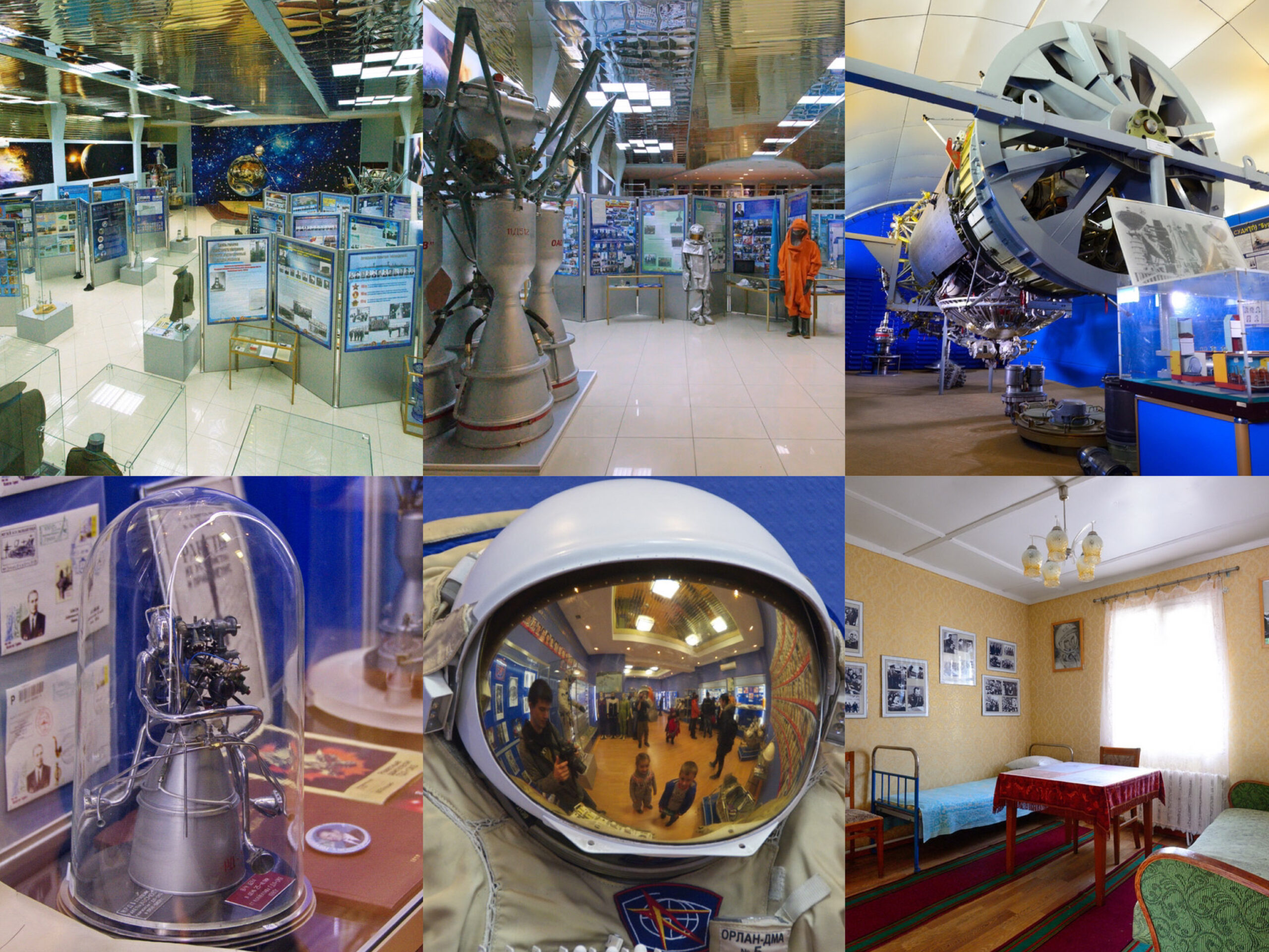
The Museum of the History of the Baikonur Cosmodrome showcases space exploration history, featuring meteorite fragments, spacecraft windows, and equipment from past missions. Photo credit: advantour.com
A standout exhibit is a life-size model of the Mir space station, alongside a replica of the ISS, which orbits Earth at 400 kilometers altitude, circling the planet 16 times a day. The museum also demonstrates the meticulous process of rocket staging, where spacecraft jettison different parts as they ascend into space. Today, modern technology allows spacecraft to dock with the ISS in just six hours, compared to the two-day journey of earlier missions.
Outside, the museum’s open-air section features a striking lineup of space relics. The centerpiece is the legendary Buran space shuttle. Visitors can explore the shuttle’s cargo hold, step into its airlock, and even take the pilot’s seat in the cockpit. Surrounding exhibits include a full-scale Soyuz spacecraft, rocket engines, launch pad models, radar antennas, and vintage vehicles used at the cosmodrome. A full museum tour can easily take over five hours.
Baikonur remains an unparalleled landmark in global space history. As technology advances and space exploration continues, the cosmodrome remains at the heart of humanity’s journey beyond Earth.

